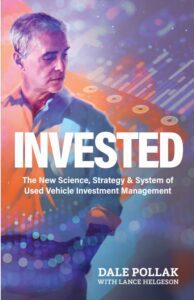I’ve been in multiple conversations with economists and data scientists at Cox Automotive, as well as members of the Chicago Federal Reserve Bank, that have focused on the apparent and surprising strength of used vehicle sales so far in 2023.
Most analysts expected used vehicle sales in early 2023  would be softer than they’ve been. Cox Automotive reported that used vehicle sales were up 5 percent in January 2023 compared to January 2022. It appears February sales may not reach last year’s levels, but they remain robust.
would be softer than they’ve been. Cox Automotive reported that used vehicle sales were up 5 percent in January 2023 compared to January 2022. It appears February sales may not reach last year’s levels, but they remain robust.
The data’s a bit of a head-scratcher because analysts and others thought affordability would be a bigger roadblock for used vehicle buyers. Several interest rate increases in 2022, along with another one earlier this month, have resulted in higher average monthly payments for three-year-old vehicles (up $123/month from a year ago) along with higher down payments (up $500 from a year ago).
A prominent theory or explanation for the recent strength in used vehicle sales is that we’re seeing an early start to the spring tax season bounce. Indeed, the Internal Revenue Service has processed significantly more refunds so far this year compared to the same timeframe last year. Even though the average refund is smaller than in 2022, there’s consensus that consumers are spending tax refund-related money on used vehicles.
The strength of the market has contributed to another unexpected development: Many analysts thought used vehicle depreciation would continue in the early months of 2023. Instead, we’ve seen values appreciate by 2.5 percent since the beginning of the year. And while the rate of value appreciation appears to be tapering off, the recent rise is likely to spur some moderate, near-term appreciation in retail prices, which have declined about 3 percent since the beginning of the year.
What does all this mean for dealers? It seems to me that dealers with currently clean and lean inventories have an opportunity to acquire vehicles now and take advantage of what will likely be a short-lived run of retail price appreciation. I should stress, however, that if your inventory’s stocked today with more vehicles than your rolling 30-day total of retail sales, you probably should be focused on right-sizing your inventory rather than adding more cars.
But I’ll make a rare prediction: By the time mid-April or early May arrives, the current retail market party’s likely to cool off. I say this due to the three “Rs” that will manifest by then:
Rates: Observers expect that the Federal Reserve will raise interest rates at least once before mid-April, with additional increases in subsequent months. Some expect the next interest rate increase could be as high as .5 percent. Whatever the amount, we know interest rate increases tend to dampen retail demand as the already sizable costs required to finance a used vehicle purchase grow.
Refunds: If we’re seeing an earlier spring tax season sales bounce due to the IRS processing tax returns more quickly, we can be assured that by mid-April or early May, the bulk of refunds will have been issued and remaining refunds will decline. Put another way, the spike won’t be in front of us, it’ll be behind us.
Rebates: We’re already seeing a rise in new car incentives as inventory continues to build across the country. Most everyone expects factories to further expand rebate spending. As they do, the values of one-, two- and three-year-old vehicles will likely drop, creating additional margin pressure for dealers retailing late-model units.
The current market conditions are by no means cause for concern. They’re simply yet another sign that today’s used vehicle business remains marked by variability that comes and goes more frequently than it used to—a dynamic that creates opportunity for dealers who are properly positioned to grab it.
The post A Head-Scratcher Market and an Imminent Moment of Truth appeared first on Dale Pollak.





